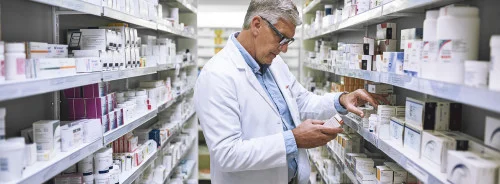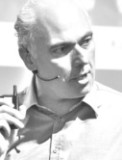As a professor of molecular oncology and biotech entrepreneur, with experience ranging from elucidating the molecular basis of diseases to developing medication for children with brain cancer, one might think that my job was completely fulfilling. It was not. Dealing with the end of a patient’s life is always a challenging confrontation. This experience shaped me however and initiated lateral thinking 15 years ago when I wondered whether there was a possibility it could be different. Could we think of game-changing tools to predict disease, or even prevent it?
My interest was especially piqued when I learned that more than 2000 years ago, in some parts of China doctors got paid as long as people in their village remained healthy. Once you got ill, you no longer had to pay. That is, ‘the system’ paid for consistent health. Would it be possible to go back to this, but in a contemporary way, from reactive sickcare to proactive healthcare? Would it be possible to create and monetise health instead of carrying on along the lines of the current standard with my doctor, hospital, pharma companies and medical device makers making money from me being sick?
I tried to answer these questions with Sick No More, my book published in 2014, which explored how we could go back to this ideal world. Some called it visionary, but I never liked that. I felt more that the idea was common sense and feasible to start applying tomorrow. That tomorrow is today.
For example, we are seeing models appearing where I can store my personal data in a secure way and get rewarded by my insurer for living healthily and by a pharma company for being included in a clinical trial. Apple is soon opening its first two clinics, AC Wellness, to promote employee health and is currently hiring. Overall, the majority of new recruits aren’t physicians. Instead, Apple is bringing in nutritionists, nurse practitioners and exercise specialists. It has also hired about six care navigators, who guide patients to the best care, whether this means a lifestyle change or a conversation with a specialist. In St. Louis, Missouri, the first remote hospital (Mercy) is a reality—there isn’t a single patient in the hospital. They manage remotely, which means they no longer get rewarded for filling beds. The emphasis is on and reward is in the outcome.
The publication of Sick No More was, apparently, just the beginning. It launched a keynote speaker tour across the globe, from Antwerp to Tokyo and Silicon Valley, (48 months and counting), to explain and document my ‘vision’.
Every time I spoke people got inspired by the possibilities of what they learned could come next. Even more so, to my pleasant surprise, over and over again, my audience endorsed my vision. This even included the parties who currently thrive from sickcare and are making money from illness and disease. The reason for this reaction? Maybe simply an inspiring, convincing talk. For sure, many audiences were hearing these ideas for the first time—their unknown unknowns (Rumsfeld 2002). But there was also an unspoken fear that my model of extreme healthcare could turn out as disruptive as had been the transition from analogue to digital photography. That transition was initially embraced by Kodak, an early market leader in photography. But after one year, they didn’t want to support digital photography any longer because the uptake was too slow. Everybody knows what happened a few years later. Kodak became obsolete and filed for bankruptcy. Not a single healthcare player wants to experience this kind of Kodak moment.
But imagine this for a second: the market leaders in development of medication, medical devices, hospital care or health insurance suddenly become obsolete. But in the meantime, as well, these parties struggle to embrace let alone act upon this possibility, this drastic emerging change.
In light of this I then felt I could do more. I felt I could offer more than expected from a keynote or a workshop, even if it provided some inspiration, mind-stretching and was thought-provoking. It felt like I was offering a gift I was not even aware existed. This was my first encounter with the concept of Delight.
Can ‘Delight’ exist in the anxiety-ridden world of healthcare?
When I started to communicate the concept of Delight in healthcare, people usually responded by asking if it was really possible to experience anything delightful in a stressful healthcare setting. But as they kept listening, they started to realise that in any healthcare transaction (patient going to hospital, patient looking for information, doctor storing patient data on file, patient reminded about his/her medication scheme), you can do the following:
- remove an element of friction (in time, in location, in interface)
- put the transaction into a new perspective giving it an experience format to look forward to (ie, hospital picks up the patient at home)
- add a design feature for fun, reward, authenticity.
These approaches are the foundation of Delight Thinking that I describe in my books. I see a time when we will use the concept of Delight to help introduce our digital twin, our personal alter ego.
Indeed, Delight is the concrete, tangible exponent of an experience which comes close to magic and for which you can’t be prepared. Incidentally, a company called Magic offers you a 24/7 personal assistant. And that is exactly how I see the future. Our human digital twin, a 24/7 guardian angel as personal assistant which practises and learns from something unknown before, to coach and delight us how to live life to the fullest, and help us to be the best version of ourselves. Remember the old Chinese doctor who kept us healthy? Our digital counterpart will take on exactly that role.
Revising the customer experience for more Delight
For a more delightful experience, customer interactions need revision. Below are a few examples that need work:
- Hours/appointments: When is your provider open? Are they available when its most convenient for you? Do they expect you to miss work or school to come see them? How far in advance do you have to book an appointment with your specialist (gynaecologists are noteworthy according to my wife)? Can you simply “walk in” for appointments?
- Interactive booking: Can you book appointments online? Can you cancel or reschedule online?
- Information collection: Does your doctor make it easy to provide information about your visit? Can you do this online before your visit, or are you handed a clipboard full of forms where you enter information you have already provided on previous visits?
- Electronic communication: Can you send your healthcare provider email? Do they respond? Do they even make an email address available? Can you even leave a voicemail?
- Response time: How quickly do they follow up to a request? Do they have a consistent guarantee on time to appointment? What about in response to a question via email or phone?
- Pricing transparency: Have you ever seen a menu of pricing for any healthcare services? Why not? Price lists of common procedures are rarely publicly available in every clinic and office
- Information sharing: Does your doctor send you a detailed “receipt” of the procedures they performed, their discoveries, their analysis, and their conclusions so that you have an archive? Do you even get a list of the charges they are submitting to your insurance company? Are the charges ever discussed or explained?
- Empathy: Do you find that your healthcare provider makes a concerted effort to treat you as a customer with enthusiasm and empathy?
- Service level: Do your doctors ask you for feedback? Do they conduct surveys? Do they measure waiting time? Do they measure Net Promoter Score (NPS)?
It’s also worth noting that the healthcare space is only now slowly learning how to embrace start-ups and the learnings from their daily routines. The introduction of new healthcare technology can generate unintended consequences for physicians and patients. Consider the electronic health record (EHR). The American Medical Association (AMA) recently launched a push to consolidate the fragmented data generated by these systems to make it more useful in practice. The online community is a space for physicians to connect with technology companies and entrepreneurs in order to collaborate on the development of new digital health tools. Belgian-based In4care, uniting close to 400 hospitals and care organisations, launched in4care Inside, an online community to connect all its members and a growing amount of start-ups in a 24/7 knowledge exchange environment. Start-ups find a fertile application ground in the care organisation, which can signal novel needs showing the way forward – to a more delightful future in healthcare.







